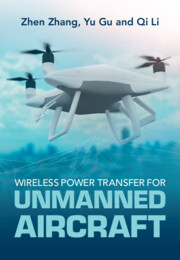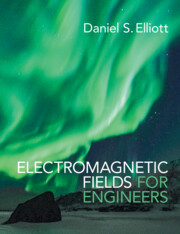Refine search
Actions for selected content:
1562 results in RF and microwave engineering
Transmission Lines
- Equivalent Circuits, Electromagnetic Theory, and Photons
- Coming soon
-
- Expected online publication date:
- March 2026
- Print publication:
- 31 March 2026
-
- Book
- Export citation
5 - Control Scheme based on the PT-Symmetric WPT System
-
- Book:
- Wireless Power Transfer for Unmanned Aircraft
- Published online:
- 10 October 2025
- Print publication:
- 30 October 2025, pp 70-95
-
- Chapter
- Export citation
Copyright page
-
- Book:
- Wireless Power Transfer for Unmanned Aircraft
- Published online:
- 10 October 2025
- Print publication:
- 30 October 2025, pp iv-iv
-
- Chapter
- Export citation
2 - Hovering Wireless Charging for UAVs
-
- Book:
- Wireless Power Transfer for Unmanned Aircraft
- Published online:
- 10 October 2025
- Print publication:
- 30 October 2025, pp 18-31
-
- Chapter
- Export citation
Index
-
- Book:
- Wireless Power Transfer for Unmanned Aircraft
- Published online:
- 10 October 2025
- Print publication:
- 30 October 2025, pp 129-130
-
- Chapter
- Export citation
3 - Magnetic Coupler Design for Wireless Charging of UAV
-
- Book:
- Wireless Power Transfer for Unmanned Aircraft
- Published online:
- 10 October 2025
- Print publication:
- 30 October 2025, pp 32-42
-
- Chapter
- Export citation
6 - Charging Range Extension for the PT-Symmetric WPT System
-
- Book:
- Wireless Power Transfer for Unmanned Aircraft
- Published online:
- 10 October 2025
- Print publication:
- 30 October 2025, pp 96-128
-
- Chapter
- Export citation
Acknowledgements
-
- Book:
- Wireless Power Transfer for Unmanned Aircraft
- Published online:
- 10 October 2025
- Print publication:
- 30 October 2025, pp viii-viii
-
- Chapter
- Export citation
4 - Control for Wireless Charging of UAVs
-
- Book:
- Wireless Power Transfer for Unmanned Aircraft
- Published online:
- 10 October 2025
- Print publication:
- 30 October 2025, pp 43-69
-
- Chapter
- Export citation
1 - Fundamentals of Wireless Power Transfer
-
- Book:
- Wireless Power Transfer for Unmanned Aircraft
- Published online:
- 10 October 2025
- Print publication:
- 30 October 2025, pp 1-17
-
- Chapter
- Export citation
Contents
-
- Book:
- Wireless Power Transfer for Unmanned Aircraft
- Published online:
- 10 October 2025
- Print publication:
- 30 October 2025, pp v-vii
-
- Chapter
- Export citation

Wireless Power Transfer for Unmanned Aircraft
- Fundamentals, Design, and Control
-
- Published online:
- 10 October 2025
- Print publication:
- 30 October 2025

Electromagnetic Fields for Engineers
-
- Published online:
- 09 January 2025
- Print publication:
- 26 September 2024
-
- Textbook
- Export citation
5 - Digital Signal Processing for RFID Applications
-
- Book:
- Radio Frequency Identification Engineering
- Published online:
- 02 January 2025
- Print publication:
- 09 January 2025, pp 93-130
-
- Chapter
- Export citation
4 - An Overview of the ISO 18000-63 Standard
-
- Book:
- Radio Frequency Identification Engineering
- Published online:
- 02 January 2025
- Print publication:
- 09 January 2025, pp 77-92
-
- Chapter
- Export citation
8 - Self-Jamming in Backscatter Radio Systems
-
- Book:
- Radio Frequency Identification Engineering
- Published online:
- 02 January 2025
- Print publication:
- 09 January 2025, pp 175-197
-
- Chapter
- Export citation
7 - A Software-Defined RFID Reader Design
-
- Book:
- Radio Frequency Identification Engineering
- Published online:
- 02 January 2025
- Print publication:
- 09 January 2025, pp 148-174
-
- Chapter
- Export citation
Dedication
-
- Book:
- Radio Frequency Identification Engineering
- Published online:
- 02 January 2025
- Print publication:
- 09 January 2025, pp v-vi
-
- Chapter
- Export citation
Foreword
-
- Book:
- Radio Frequency Identification Engineering
- Published online:
- 02 January 2025
- Print publication:
- 09 January 2025, pp x-xi
-
- Chapter
- Export citation
10 - Unconventional Wireless Power Transmission
-
- Book:
- Radio Frequency Identification Engineering
- Published online:
- 02 January 2025
- Print publication:
- 09 January 2025, pp 212-231
-
- Chapter
- Export citation
